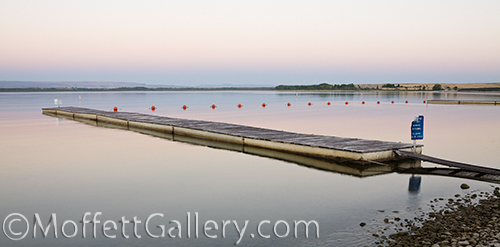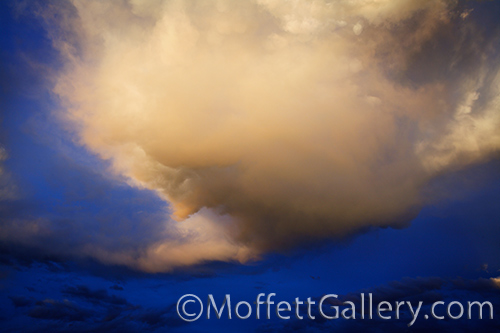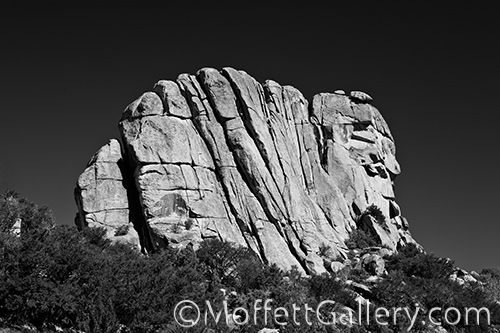by tmoffett | Sep 7, 2010 | Color, Landscape, Photographic Philosophy, Ramblings

Morning Calm, Lake Lowell
I had not been out to photograph just for me in a couple of weeks. I had a need to get out and make some exposures. Anywhere. It didn’t even matter if the photographs were very good. I get that way sometimes. I feel that I need to do something, so I do it. Saturday morning was that day. I arose at 6:00 and grabbed my gear and went. I ended up at the lake just before sunrise. It was beautiful. When I arrived, I could only see one boat on the water, and it sat motionless. Must have been fishermen. There was not a wave on the water. The only disturbances were a few fish jumping just off shore. The water and sky were filled with subtle pastel colors. I soaked in the feeling. It was refreshing to the soul. I walked and thought and meditated. I photographed. Life is good.
Not long after shooting this image, more boats arrived and the water got choppy from all of the action. The noise level increased dramatically as people arrived for the holiday weekend. The sun rose and the light quality diminished, but I had my fix. I beat the rush. I made photographs. I cleared my head. I am now ready to tackle whatever life throws at me, and if it gets tough, I’ll go photographing again. It is my therapy. I love life.
by tmoffett | Sep 6, 2010 | Color, Landscape, Photo tips, Photographic Philosophy

Cloud Formation
Remember the days as a kid spent laying on your back watching the clouds blow by? Those were the days! Not a worry in the world. Just kick back and enjoy the summer. Sometimes I wish I could go back to those days. And then I think again. I like where I am and where I am headed, so I guess I wouldn’t change a thing. Life is good.
Photography is my outlet. I say what I feel through my images. I have learned to manipulate the camera to capture feelings along with the image, or should I say embed in the image. To some viewers, it may just be a picture, but to others it exudes feeling and meaning. This happens because I shoot from the heart. I don’t think when I photograph, I feel. I have tried to make technique a part of my nature so I do not have to think about it when I photograph. It comes naturally. I focus now on interpretation of a scene. I find that if I think too much, then I end up with boring images that have no meaning, to me or anyone else.
Learning technique takes time. It takes practice. I remember taking a Zone System class in college. Everyone seemed to hate it because it was too technical. It did not allow for the art to come through. It was difficult and grueling. We photographed towels and analyzed the density of the film and prints. It was boring. I stuck to it and learned. It was all about technique. Looking back, I don’t think that I learned more in any other class or workshop that I have taken since. That class is where technique became second nature for me. It allowed the art within me to be released. As a landscape photographer that is critical if I want my images to have meaning.
I guess what I am saying is this:
Learn the technique.
Pay the price (time and practice).
Enjoy the result.
by tmoffett | Sep 5, 2010 | Color, Landscape, Ramblings

Rising Mist, Stanley Lake
The cool summer mornings at Stanley Lake are quite refreshing. There is nothing better for cleansing the mind and getting a fresh start. It seems that when I get out like this I can put the stresses of life behind me and just enjoy the beauty that this world has to offer. When returning home I am then ready to tackle the challenges thrown my way.
When out in the wilderness, I like to arise long before sunrise to get ready for the day. I will then photograph the sunrise, return to camp to cook breakfast for the family and then spend the day hiking and fishing, making sure to be back about an hour before sunset to photograph again. It makes for a perfect day! I only wish every day could be as good. This particular morning I didn’t even have to leave camp to make this image. The sun had just come over the horizon as this fisherman headed out from the dock. Beautiful morning light and a little mist rising from the water. I couldn’t have asked for much more. Because I stayed around camp, the kids got an earlier than usual breakfast. Everyone were happy campers that morning!
by tmoffett | Sep 4, 2010 | Black and White, Landscape

Bread Loaf Rock, City of Rocks
We have some great opportunities for landscape photography in Idaho. City of Rocks is just one of many locations with unique landscape characteristics that make for an exciting morning of photography. This area is filled with rock climbers, as the face of the rocks make for some challenging climbing routes. I prefer photographing without much human element, so fortunately for me, most of the climbers were still eating breakfast while I was out in the field making images.
This image of Bread Loaves was taken just as I was finishing up for the day, and the rock climbers were just starting to find their routes up the face of the rocks. Early mornings, just as the sun rises is a great time for photography, but about an hour past sunrise the light becomes harsh and the scenes have less appeal to me. The soft, moody light diminishes quickly as the sun rises in the sky, and although we can still look and see the beauty, capturing it in camera becomes a greater challenge. The sky, here, was totally clear and cloud free, which made for a simple background for the monolith protruding from the ground. Clouds, I think would have been a distraction.
by tmoffett | Sep 3, 2010 | Color, Composition, Landscape, Photographic Philosophy

Shoshone Falls
I like using different formats for my photographs. I know some photographers believe that one should always shoot “full frame,” but not me. Why should I let a camera manufacturer dictate the aspect ratio that my photographs should be? I feel that the photographer should be in control of the entire process, including final cropping. When a particular image would be best as a square, then make it square, if rectangle is best, then do that, and sometimes a panoramic format work best. I have shot with a 4×5 view camera quite a bit, but I really don’t like that format full frame. I often will crop the top and bottom 3/4 inch off to make it closer to 3×5. I find that a much more appealing format. I have been photographing that way off and on now for 25 years and I still like it.
One thing that I do believe in is to determine the crop before making the exposure. Previsualization is key. A great photographer will know at the time of exposure what he/she wants the finished piece to look like and knows how to get it. This applies not only to the cropping, but to the final look and feel of the image as well.
Digital photography has changed how I capture images, but it has not changed my vision much. I have had to learn new techniques, but only to the extent of enhancing my vision. The concept of previsualization is a hard one for many of my student to catch on to. With digital cameras offering instant feedback, the new philosophy is to shoot a thousand images and when then when editing, we are sure to find a good one. This thought process destroys the ability to make truly thoughtful art. It is not about creating meaningful images anymore, just pretty pictures. This way of thinking and creating is definitely not for me.
by tmoffett | Sep 2, 2010 | Color, Landscape, Photographic Philosophy

Horizon, Seaside, Oregon
Here is a sneak peek into a new portfolio that I am currently working on. Entitled Horizons, the images are all seascapes made in an abstract sort of way. The power, beauty and motion of the sea are somewhat overshadowed by the horizon line, the only truly sharp area of the photographs.
This series started as a fun diversion from my more traditional landscape photography work. As I photographed more and more, I developed a love for the feeling portrayed in these images. Now, every chance I get to be at the ocean I am there, camera in hand. I have always loved capturing motion with still images, but that love has developed into a real passion while working on this portfolio. There is something very captivating about the ocean. Watching the movement and power of the waves is mesmerizing. I could sit and watch this motion for hours and never tire of it.
The effects of motion in this series is all captured in camera. none of the effects are made in post production. Slight tonal adjustments are the only things accomplished after capture. I am a firm believer in using the camera to make photographs, not Photoshop. To accomplish this task successfully, one must master the technical aspects of the camera, an art that is becoming lost in today’s world.








Recent Comments